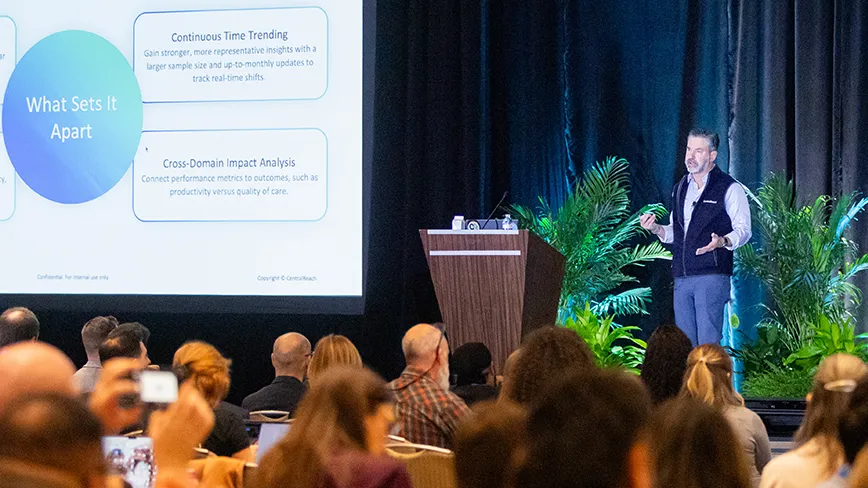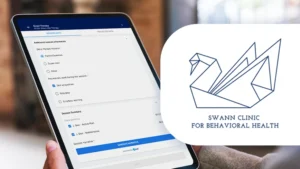Ped·a·go·gy /ˈpedəˌɡäjē/
Pedagogy, the methods and practices of teaching, plays a pivotal role in shaping educational experiences. In a diverse special education environment, uniquely tailored teaching methods are essential for meeting the needs of each student.
How are special education classrooms evolving?
Special education classrooms have evolved in many manners in recent years, thanks largely to a growing understanding and acceptance of the diverse range of student needs. The special education population has nearly doubled since the implementation of the Education for All Handicapped Children Act of 1975, which is now the Individuals with Disabilities Education Act (IDEA).
32% of these children have a specific learning disability, such as dyslexia or dysgraphia. Others have speech and language disorders, autism spectrum disorder (ASD), other health impairments such as ADHD or epilepsy, developmental delays, or emotional disturbances [3]. With such a wide range of health and behavioral challenges encompassing the special education population, individualized teaching and support is critical.
Gone are the days of a one-size-fits-all approach to education. Instead, educators are using personalized, research-supported strategies that are as unique as the individual student. Establishing a positive classroom climate has become a central focus for educators in recent years. With such diverse needs encompassing the special education population, a positive classroom climate can play an essential role in academic success and IEP progress, enhance job satisfaction for educators, increase parent engagement in their child’s education, and more [5].
With high burnout in special educators and turnover rates nearly double that of general education teachers at 12.3% [1], implementing uniquely tailored goals and interventions can be a challenge for overworked and under-supported educators.
Many districts are turning toward innovative technologies to better support educators and students.

The Role of Technology in Supporting Pedagogy in Special Education Classrooms
In today’s digital age, technology has become a powerful component to supporting pedagogy in special education. Utilizing technology not only increases efficiency and reduces administrative burdens on educators but also increases educational equity for children with special needs [2].
Some of the types of specialized software tailored to the needs of special education classrooms include:
Digital assessments: Educators can utilize digital assessments to obtain a holistic view of their students’ strengths and areas of need. Looking beyond standardized academic assessments enables educators to drive student success with a clearer picture of their needs in other areas, such as social skills, classroom routines, and cooperation.
Data collection and IEP management: Individualized Education Programs (IEPs) are a required component of special education services. IEP goals must be measurable and include quantifiable data collected throughout the school year. Tailored special education software can be utilized to integrate IEPs with ongoing data collection seamlessly. This allows educators to efficiently analyze students’ progress across all goals in real time to inform their teaching strategies. Digital data collection also minimizes educator burnout by reducing administrative duties.
Assistive technologies: There are countless ways to use assistive technologies in a special education classroom to bridge learning gaps and enhance individualized goal progress. One way is through digital task analytic support aimed at increasing independence. Educators can empower students by enhancing their independent life skills, allowing for success in and outside the classroom.
Applying Innovative Pedagogy in Special Education
A deep understanding of pedagogy in special education can equip educators and therapists with the tools needed to drive positive student outcomes. The more skills, techniques, and strategies educators have, the more effective their teaching will be, thus impacting the progress their students make. Despite the added struggles special education students may face, they can learn new skills when provided the appropriate instruction and given adequate opportunities to practice those skills [4].
Learn more about applying pedagogy in special education, download our whitepaper, Beyond Academics: Pedagogy in Special Education
As the special education landscape evolves, innovative technology stands at the forefront of pedagogy to drive positive outcomes for students and educators alike. In our paper, we further explore the role technology plays in special education classrooms.
References
[1] Buttner, A. (2021, August 6). Special education and the teacher shortage. Frontline Education. https://www.frontlineeducation.com/blog/special-education-teacher-shortage/
[2] Evans, J. (2018). Beyond engagement: Using technology to enable new learning experiences and empower educational effectiveness. Project Tomorrow. https://files.eric.ed.gov/fulltext/ED591339.pdf
[3] National Center for Education Statistics. (2023). Students With Disabilities. Condition of Education. U.S. Department of Education, Institute of Education Sciences. Retrieved from https://nces.ed.gov/programs/coe/indicator/cgg.
[4] Partington, J.W., & Partington, S. W. (2017). Success on the Spectrum. How to Teach Individuals with Autism. Walnut Creek, CA: Behavior Analysts Inc. Success on the Spectrum: How to Teach Skills to Individuals with Autism – CentralReach (partingtonbehavioranalysts.com)
[5] Stewart, E. B. (2008). School structural characteristics, student effort, peer associations, and parental involvement: The influence of school- and individual-level factors on academic achievement. Education and Urban Society, 40(2), 179–204. https://doi.org/10.1177/0013124507304167






